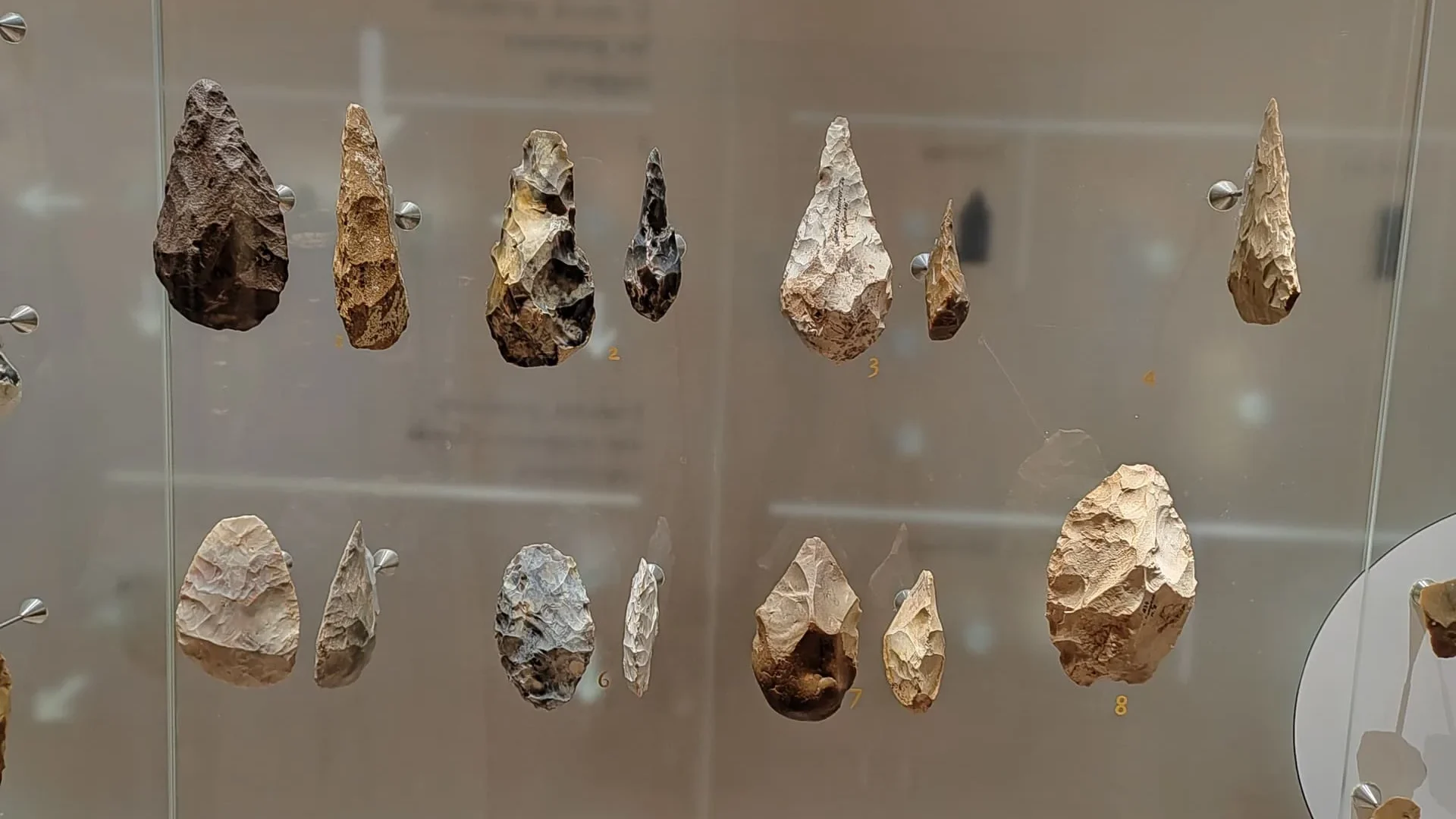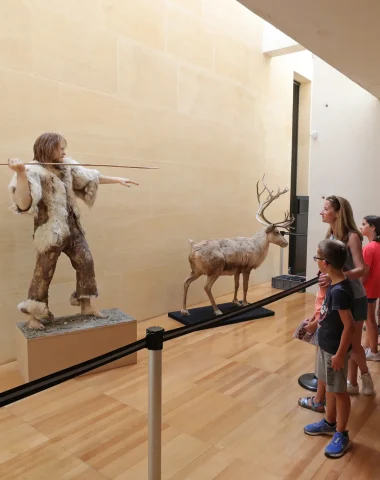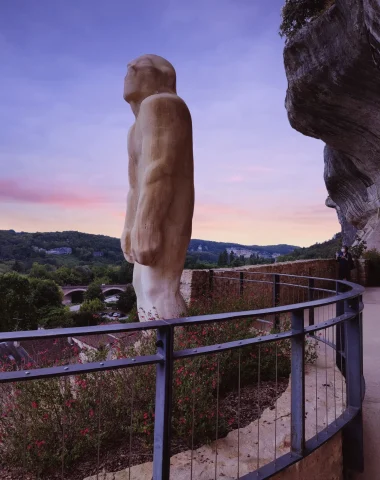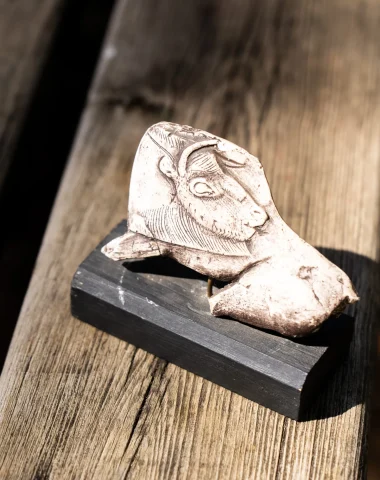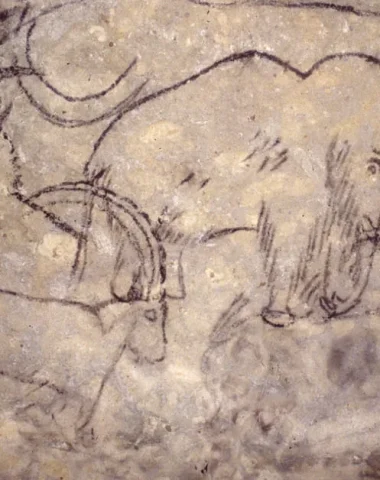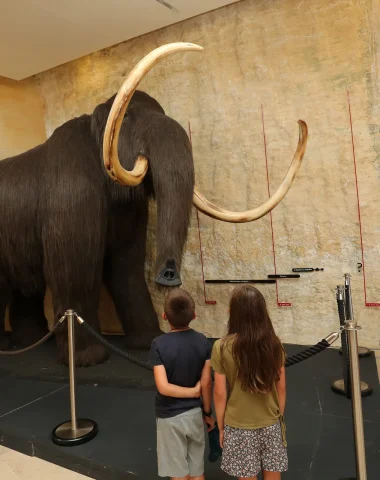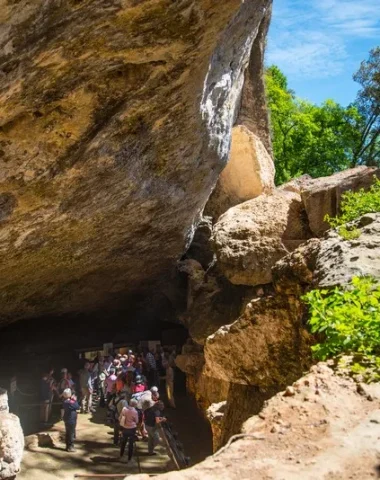They say trimming the end of fat, everyone knows the expression in France, and it adapts rather well to the Dordogne! However, our prehistoric ancestors who left many traces in Périgord Noir were more focused on knapping flint. This tool was much more useful to them back then.
What is a flint?
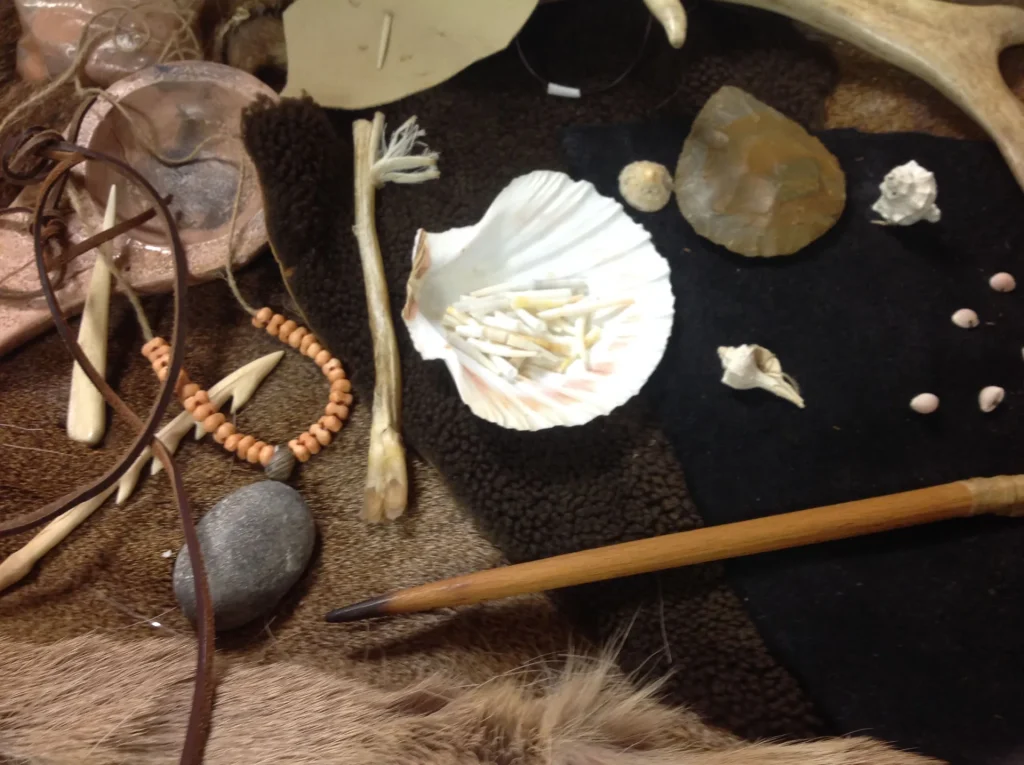
The Paleolithic (about 3 million years ago) is characterized by the invention of tools based on minerals. Moreover, the Paleolithic period takes its name from the Greek “palaios”, which means “ former ”, and “lithos”, which means “ Pierre ».
Flint, this piece of cut stone, made it possible to slice or even tear out. Flint is often represented almond shaped, cut on both sides it is then called the biface.
What was a flint used for?
In prehistoric times, stone cutting was an activity in its own right. Knapping a flint made it possible to carry out many other daily activities in the Paleolithic.
Thanks to this tool, animal skins could be transformed into clothes.
The animal skins were carefully cleaned and then beaten with flint : the fat and flesh were removed so that the fur did not rot. Once dried, the skins were assembled to make clothes ou panels covering the tents which served as shelter. The assembly was done using animal bone needles cut and shaped themselves by a flint.
The handaxe with a thousand sparkles allowed de to cook.
The particularly sharp prehistoric tool made it possible to cut the meat et the fish. The cutting of these foodstuffs was necessary for the preparation of established dishes from the harvest of the hunt or the Peach.
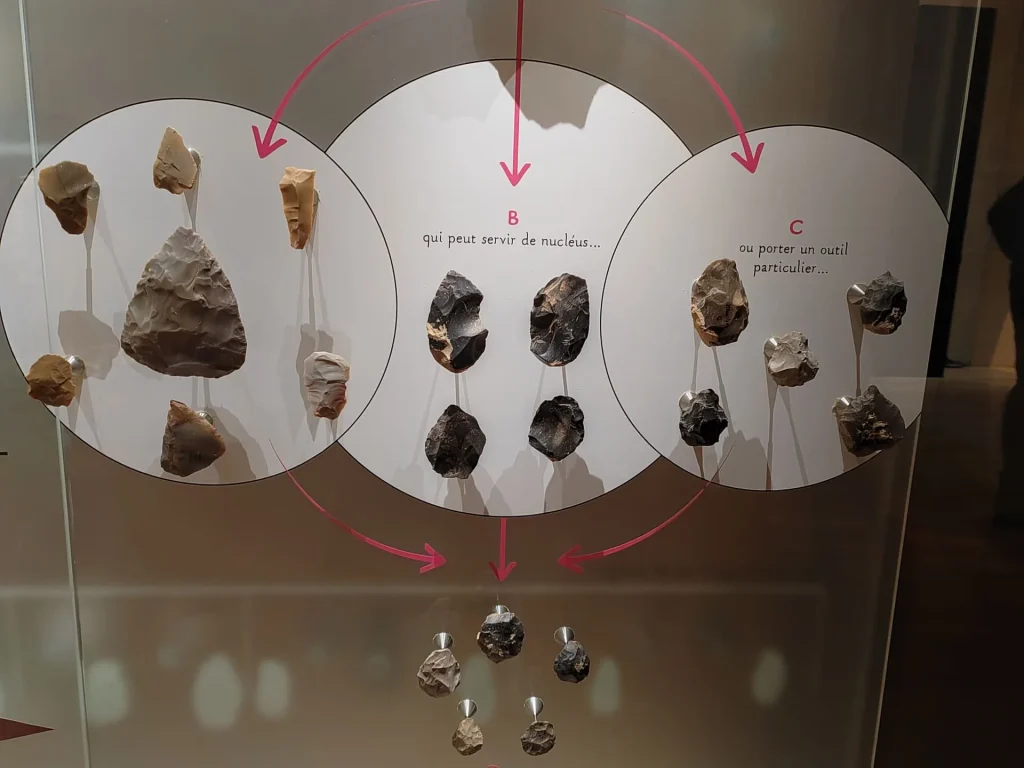
Flint was used for hunting.
No online shopping and uber eat delivery in prehistoric times! You had to hunt and make your own tools to bring back the bison that fed the entire tribe. The wooden tip of a spear was sharpened by the cut stone. The flint was sometimes directly attached to the end of a large stick, and a spear was created.
Flint was used to light a fire
The Paleolithic is about tools but above all the discovery of fire. Prehistoric humans learned to produce sparks by rubbing a piece of flint and a piece of pyrite against each other. Prehistoric life became less difficult after this discovery. The fire kept the animals away, kept warm and cooked the meat.
Flint, an essential tool in Paleolithic music
Paleolithic and Neolithic men also worked with wood. Flutes are made using the sharp point of flint.
Where can you find flint?
In Dordogne, it goes without saying that we find a lot of them. In nature ? No, but in our visiting sites.
The National Museum of Prehistory, an absolute reference on the Paleolithic period, offers flints of various sizes and shapes in numerous display cases. Go to the collections « Everyday life " or " Tools » to find out more about their origin.
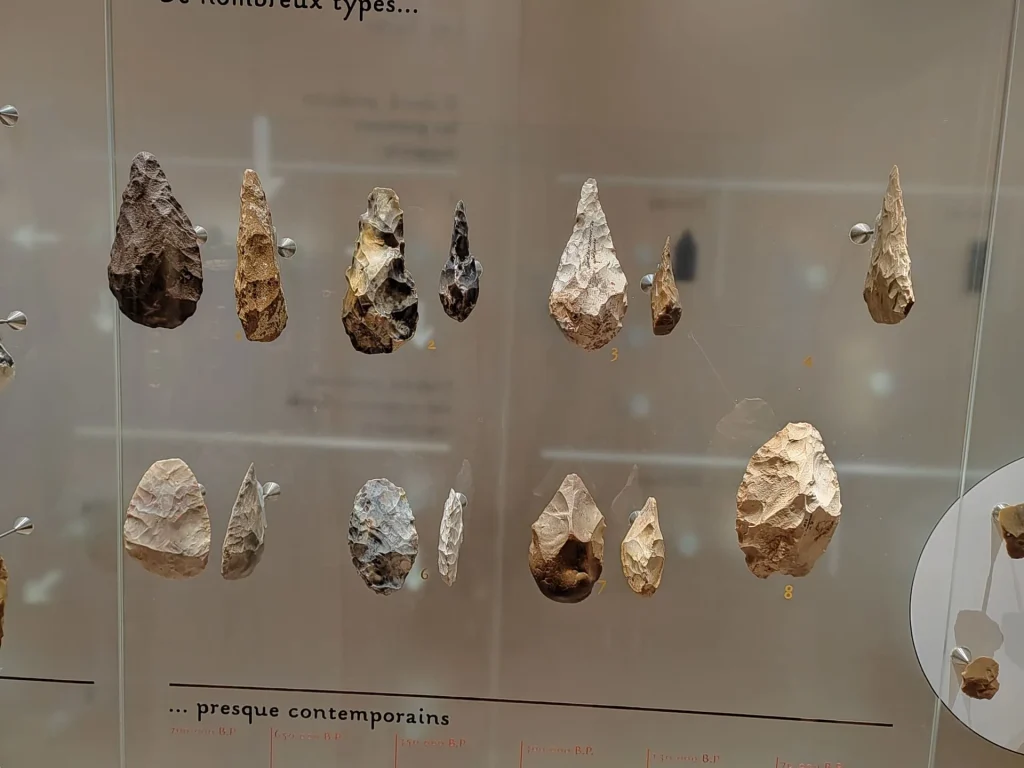
The Museum of Art and Archeology of Périgueux is the other museum in Périgord where you can admire flints. An entire floor is devoted to prehistoric period. There you will find a tent made with animal skins and numerous explanations on the prehistoric sites which abound in the Dordogne but also throughout France. A biface with protruding flakes adorns the front of the Museum, proof that flint is an important symbol of Périgord.
Where can flints be made?
Be careful, we tell you this if you promise not to throw shards in your eyes!
The tourist sites of Dordogne offer activities during school holidays including introduction to cave art, rocket launcher or flint knapping. Few prehistory enthusiasts are capable of carving this stone the way our ancestors did. To discover them, go to the caves of Roc de Cazelle, Castel-Merle, La Roque Saint-Christophe.

This workshop offered in particular to Caves of Roc de Cazelle allows you to explore the daily life of prehistoric men and to experience the lifestyles of prehistoric men.
If you're more into the medieval period, no worries, we have that too! We will take you to Commarque Castle, stone cutting workshop, in Les Eyzies. This village is indeed the world capital of Prehistory but it has lived through many eras. Walk through its streets. Souvenir shops and Prehistory Interpretation Center sell souvenir objects in the shape of a handaxe.
Are there flints everywhere in France?
Maybe, but you have to look! And how do you know if it's flint?
In Dordogne, traces of prehistoric life have been validated following numerous excavations. The flints were recovered during his excavations. Archaeologists and paleontologists from all over the world still come to study the Vézère valley and give lectures regularly at Prehistory Interpretation Center or the family National Museum of Prehistory.
To recognize a flint, you must first be near a stream. This stone is very solid, it resists erosion and remains intact even though the surrounding rocks have eroded. Then, you have to be in a limestone region, because flint is often hidden inside this White stone.
